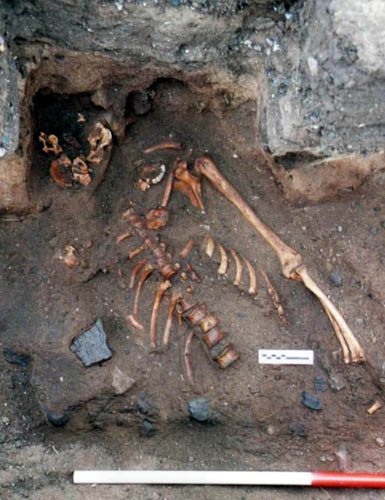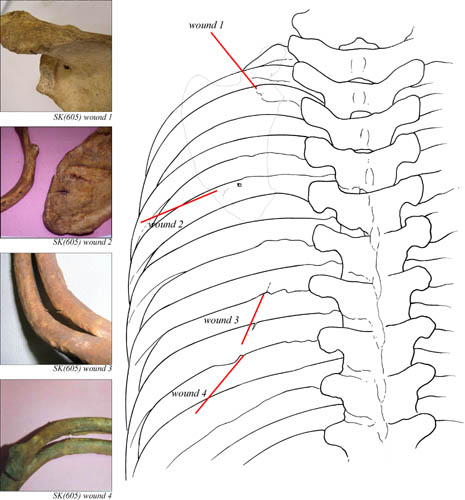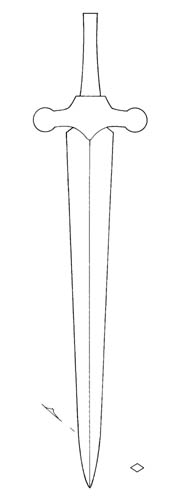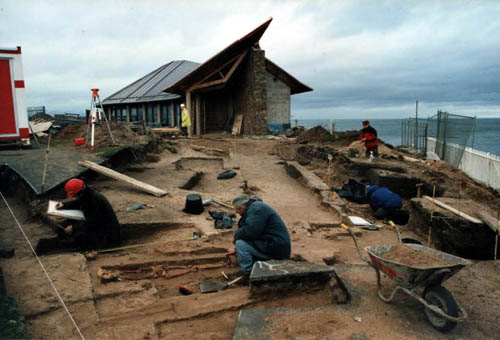THE SKELETON of a teenage murder victim who was stabbed to death more than 900 years ago has been unearthed at a Scottish archaeological site.
The remains of the 20-year-old man were found by archaeologists at a dig at a cemetery in North Berwick, East Lothian, in 2000.
After 14 years of intense testing and carbon dating experts have established that the victim man was murdered after being attacked from behind.

The skeleton showed four fatal stab wounds, two in the shoulder which were intended for the neck, and two more to the ribs which pierced the heart.
Experts at Tom Addyman Archaeology in Edinburgh believe the attacker was of military background due to the precision of the stab wounds caused by the “dirk-like dagger”.
Archaeologists believe the find, at St Andrew Blackadder church, is particularly significant and could date as far back at the late 12th or 13th century.

Tom Addyman, who led the dig, said: “We discovered the remains back in 2000 but it took a long time to carry out the necessary tests. The skeleton is probably from the late 12th century.
“We now believe the man was deliberately attacked from behind as his attacker aimed the dagger at his neck.
“He missed though and hit the shoulder blade twice causing the man to fall to the ground. He then delivered two blows to his chest which pierced his heart and left marks on the rib cage.
“We believe the attacker was probably of military background and knew exactly where needed to hit to kill his victim but because it’s so long ago it’s unlikely we’ll ever find out who it was.”
The weapon used to inflict the deadly damage is believed to be “a dirk like dagger” which had a blade measuring around 77mm.

The diamond shaped tip and sharpness of the blade meant it pierced the body with ease.
Despite the young man’s gruesome end, his body was not to lie in peace.
Storms in the 17th century caused the cemetery’s church to collapse into the sea, taking with it the young man’s legs and pelvis.
A later burial also saw the skeleton suffer damage again after a shovel severed the skull from the remaining skeleton.
Mr Addyman added: “We know the victim was really quite well built and his arms were very muscular. It’s possible that he too was in the military.
“His left shoulder was quite worn as well which could mean he used to do archery. But because his skeleton is missing we probably won’t be able to give him a face.”

Experts hope to carry out further research into the remains by testing the bones for food residue.
They hope that by determining what his diet mainly consisted of they will be able to identify where he came from or if he was local to the area.
The dig was organised by the Scottish Seabird Centre, which is next to the church, and undertaken by Mr Addyman’s firm and was latterly supported by Historic Scotland.
Rod McCullagh, Senior Archaeology Manager at Historic Scotland, said: “These archaeological discoveries and the subsequent analyses mark a significant advance in our understanding of the early history both of North Berwick and of southern Scotland.”
The findings of the dig are to be published in a new book by the lead archaeologist next month.

